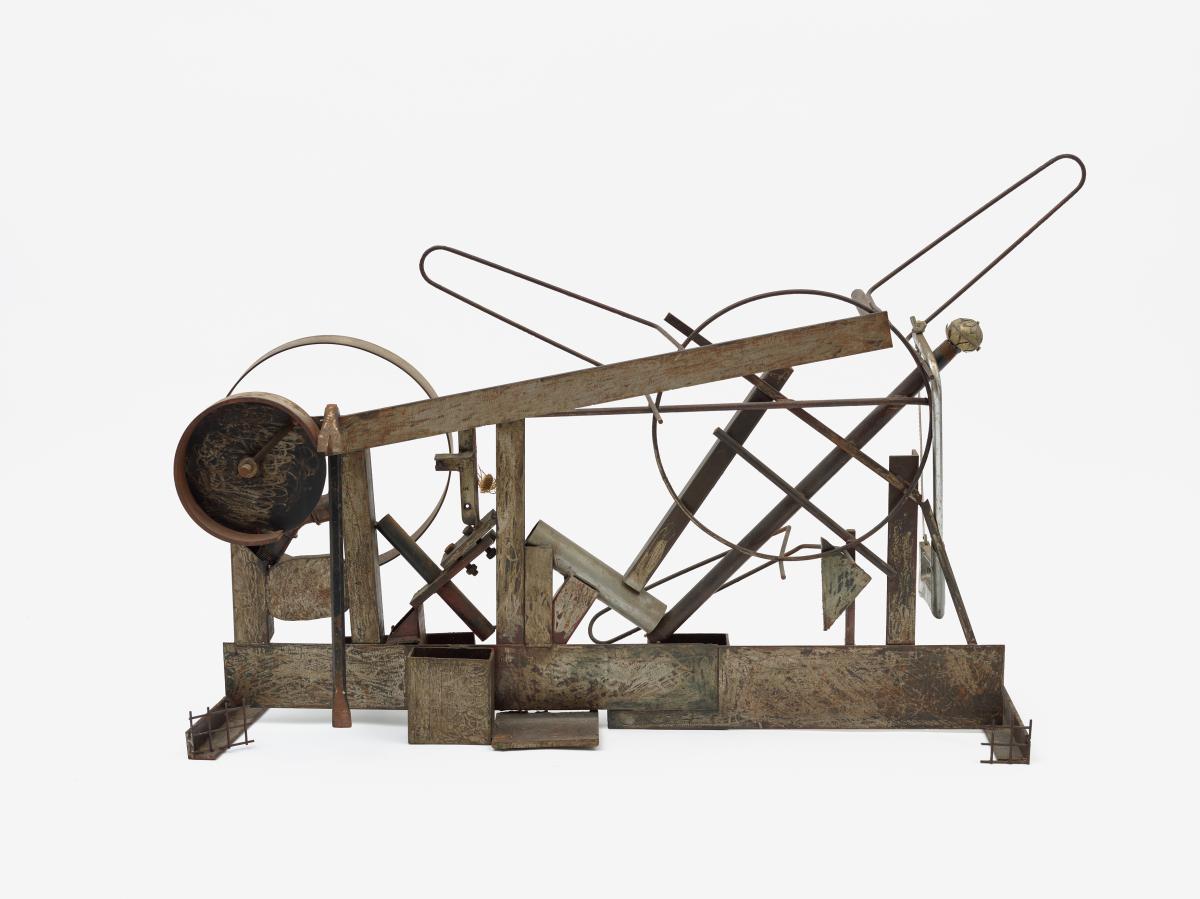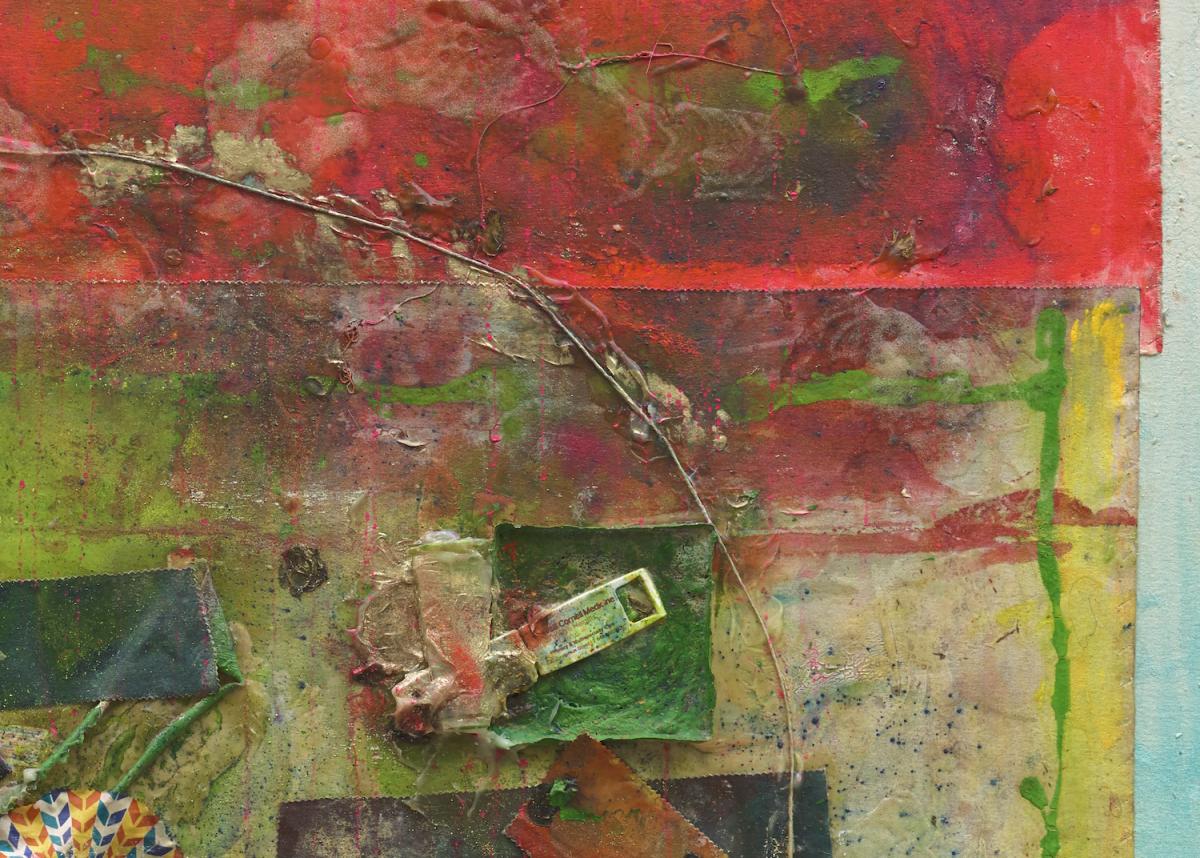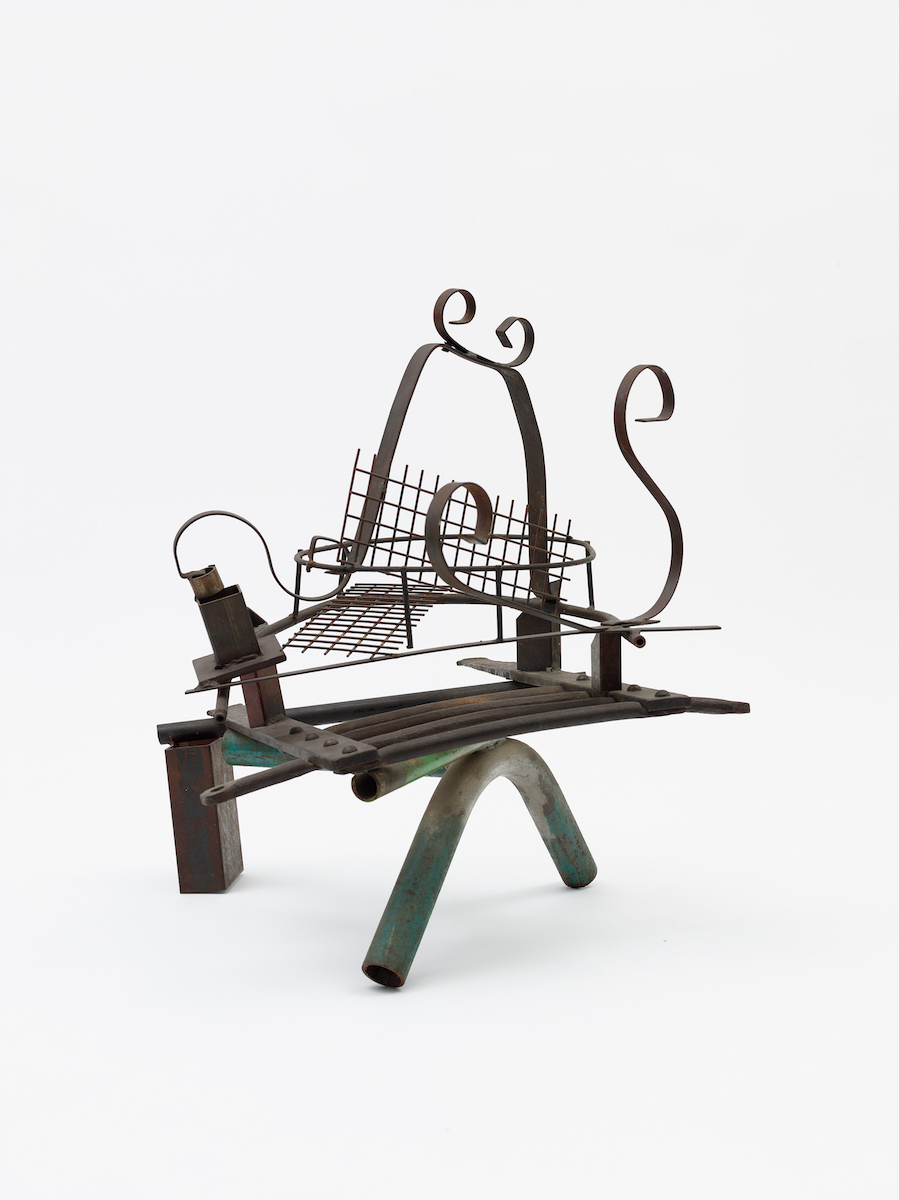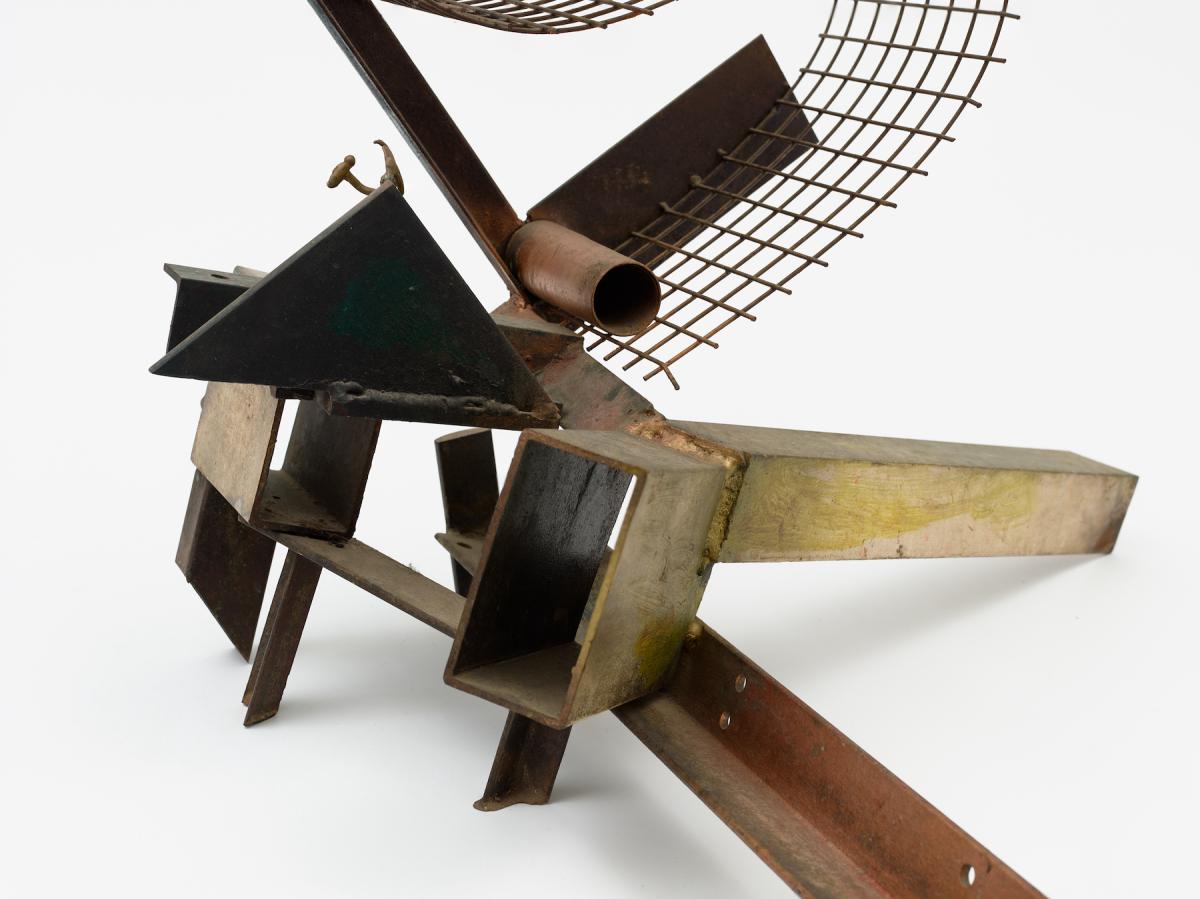This wonderful Cornish workshop and museum is dedicated to the legacy of studio pottery trailblazer Bernard Leach
See Frank Bowling’s art in three dimensions
See Frank Bowling’s art in three dimensions
14 Jul 2022
The artist is best known for his paintings, but he tells Melissa Baksh that sculpture holds a particular power

Frank Bowling, Hrund, 1991, © Frank Bowling, All Rights Reserved, DACS 2022. Courtesy the artist. Photographed by Anna Arca
Hailed as one of the foremost British artists of his generation, Frank Bowling is largely renowned for his abstract paintings and boldly experimental use of colour and materials. However, a new exhibition centres around the sculptural aspects of his practice, visible in both his paintings and several steel pieces made in the late 1980s and early 1990s, at London’s Stephen Lawrence Gallery.
Bowling’s art is full of productive tensions or contradictions, and the relationship between painting and sculpture is a fundamental example of this. His earliest forays happened by chance, as he explains: ‘In 1988 I was approached by a curator from the Castlefield Gallery, who offered to show my paintings and asked if I could name a sculptor who could show alongside them. The opportunity was too good to miss and so I said that I’d make some sculptures myself.’

Frank Bowling, Mummybelli, 2019, © Frank Bowling, All Rights Reserved, DACS 2022. Courtesy the artist. Photographed by Anna Arca
Bowling had never wanted to be a sculptor, and had in fact felt that sculpture seemed to ‘get in the way’. Later, when he was writing about art in New York in the 1960s, he felt much more challenged by the sculptors who were around than the painters. ‘As I became more involved in the making of paintings, I realised that geometry was a vital element of making art, and in New York I found ways of proceeding to deepen my investigations in that area. That structuring inevitably drew me to sculpture in the late 1980s; the works on show in Greenwich are the results of my efforts.’
'While welded steel is obviously going to be physically cold and hard rather than liquid and flowing like paint, both mediums follow the laws of physics'
The exhibition will be the first to tease open this fascinating relationship, bringing new dialogues around Bowling’s oeuvre to the fore. He notes: ‘Having made a lot of paintings in the 1980s that had these heavily built-up surfaces – sometimes using acrylic foam and a lot of gel – it seemed like an interesting way to work out some geometric ideas in three dimensions. In both the paintings and the sculptures (and in architecture and design for that matter), it’s about geometry; you know, the way that squares and circles and triangles interact to create stability in form.’

Frank Bowling, The Man Who Mistook His Wife for a Hat, 1988, © Frank Bowling, All Rights Reserved, DACS 2022. Courtesy the artist. Photographed by Anna Arca
Throughout his 60-year career, Bowling has been known for his distinctive application of materials, and with it, the enduring ability to deliver ‘all the expectations, all the emotions, truth, clarity’. Bowling describes the experience of using such vastly different materials – paint and steel – and the parallels found: ‘While welded steel is obviously going to be physically cold and hard rather than liquid and flowing like paint, both mediums follow the laws of physics, and you can engage with both painting and sculpture using geometric rules and architectonic principles. Sculpture is halfway to real “thingness”, while painting is all illusion.’
‘Naming works is a kind of poetic thing. As for the sculptures, their titles are riddlesome references to things that passed through my mind at the time they were made'
Bowling, who originally came to England from Guyana to be a poet, has an undeniable way with words. When questioned on some of the most curious titles in the exhibition, he tells me: ‘Naming works is a kind of poetic thing. As for the sculptures, their titles are riddlesome references to things that passed through my mind at the time they were made. Buibul (1988) almost certainly refers to Baluba or Luba sculptures that I’ve admired for a long time. What Else Can You Put in a Judd Box (2022) is a kind of in-joke, a riposte to Donald Judd who told me once that black people could dance and sing but didn’t understand “the wall and the floor”.’

Frank Bowling, Bulbul, 1988, Detail. © Frank Bowling, All Rights Reserved, DACS 2022. Courtesy the artist. Photographed by Anna Arca
Having left Guyana in 1953, the ‘land of many waters’ continues to inspire and permeate Bowling’s work. ‘Water, rivers, liquid, it all finds its way into my work – literally in the case of the waterlogged surfaces of my canvas on the studio floor. The Guyanese terrain is full of wetlands and bodies of water.
Like many artists, I’m drawn to the water because of its materiality, there is a connection. It is hard to define what water is. It is a reality. It’s alive. I used to think my eye was influenced by London light, but when I went home in 1989, I was staggered. When I looked at the landscape in Guyana, I understood the light in my pictures is a very different light. I saw a crystalline haze, maybe an east wind and water rising up into the sky. It occurred to me for the first time, in my fifties, that the light is about Guyana. It is a constant in my efforts.’
SEE
Frank Bowling and Sculpture is at the Stephen Lawrence Gallery, University of Greenwich, London from 15 July–3 September 2022. To coincide with the opening of the exhibition, a new stand-alone monograph, Frank Bowling: Sculpture, has been published by Ridinghouse.
About the Author
Melissa Baksh
Melissa Baksh is a London-based writer and broadcaster
JOIN OUR MAILING LIST
Become an instant expert!
Find out more about the arts by becoming a Supporter of The Arts Society.
For just £20 a year you will receive invitations to exclusive member events and courses, special offers and concessions, our regular newsletter and our beautiful arts magazine, full of news, views, events and artist profiles.
FIND YOUR NEAREST SOCIETY
MORE FEATURES
Ever wanted to write a crime novel? As Britain’s annual crime writing festival opens, we uncover some top leads
It’s just 10 days until the Summer Olympic Games open in Paris. To mark the moment, Simon Inglis reveals how art and design play a key part in this, the world’s most spectacular multi-sport competition



